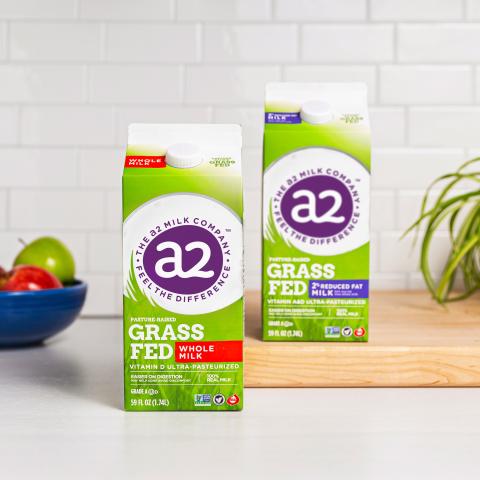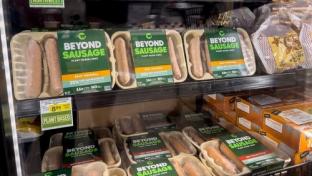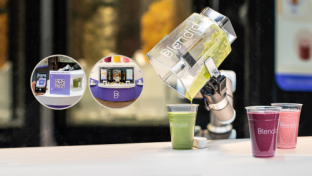Winning Over the ‘Not Milk’ Generation
MORE DAIRY COVERAGE
Today’s milk market may be a tough nut to crack — stiff competition from nut “milks” notwithstanding — but the traditional cow’s milk industry is ramping up efforts to reclaim or maintain its market share. Processors and industry groups are focusing on attention-getting marketing campaigns and product innovations, among other efforts, in the wake of shifts in beverage preferences.
In a widely shared article earlier this year, The New York Times underlined market challenges, pointing out that younger Gen Z consumers have been dubbed the “not milk” generation for buying 20% less cow’s milk than average consumers in 2022. Among other reasons, the story cited this demographic’s lactose intolerance rates, their concerns about the dairy industry’s impact on climate change, and the taste of the low-fat and skim milk that they were served in schools. Despite these and other issues, the article noted that the fact that milk is a naturally derived and nutritionally rich product can be an enticing proposition among all age groups.
[Read more: "Hannaford Criticizes Vermont's Milk With Dignity Campaign"]
Certainly, many in the milk industry are emphasizing those and other attributes of cow’s milk to maintain core consumers and reach younger drinkers. They aren’t doing it quietly, either.

Take, for example, one recent ad from the Washington, D.C.-based Milk Processor Education Program (MilkPEP). The group, known for its popular and longstanding “Got Milk?” campaigns, aired a commercial parodying alternative milks, in this case a fictitious “wood milk.” In the spot, actress Aubrey Plaza satirizes some of the hyperbole behind plant-based and other nondairy alternatives and touches on dairy producers’ real concern about the term “milk,” asking at the end, “Is wood milk real? Absolutely not. Only real milk is real.”
It’s a hot topic, to be sure. In February, dairy industry groups expressed their views after the U.S. Food and Drug Administration (FDA) issued draft guidance that non-animal products can use the word “milk” as a descriptor, with a suggestion that manufacturers add a voluntary nutrition statement to share how those products stack up against traditional milk. In response to that guidance, a bipartisan group of lawmakers introduced the Dairy Pride Act in Congress to prevent the mislabeling of nondairy products by using common dairy terms.
“As FDA’s consumer research demonstrates, consumers lack clarity as to the nutritional differences of plant-based alternatives versus traditional dairy counterparts, and the agency must promulgate guidance that not only adheres to its own standards of ‘truthful and not misleading,’ but also advances the nutrition security of Americans,” said Joseph Scimeca, SVP of regulatory and scientific affairs for the Washington, D.C.-based International Dairy Foods Association (IDFA).
Added Jim Mulhern, president and CEO of the Arlington, Va.-based National Milk Producers Federation: “By acknowledging both the utter lack of nutritional standards prevalent in plant-based beverages and the confusion over nutritional value that’s prevailed in the marketplace because of the unlawful use of dairy terms, FDA’s proposed guidance will provide greater transparency that’s sorely needed for consumers to make informed choices. Still, the decision to permit such beverages to continue inappropriately using dairy terminology violates FDA’s own standards of identity, which clearly define dairy terms as animal-based products.”
The FDA is taking more into consideration for its final guidance. In April, the agency said that it was extending the comment period on labels for plant-based alternatives to cow’s milk.
As dairy groups and producers fend off competition from nondairy products, they can take heart in the fact that milk remains a staple in the American diet. Although U.S. Department of Agriculture (USDA) data shows that per capita consumption of milk as a beverage fell to 16 gallons in 2021 from a high of 29 gallons in 1975, shoppers are still reaching for the product in the retail dairy case.
Milk isn’t the only beverage that’s been affected by consumers’ taste for other beverage types. Consumers are also drinking less juice, with per capita consumption of that beverage type down to 18 liters in 2021 from 21 liters in 2014. Value-added water and energy drink consumption were both down in 2022, as bottled water remained the most consumed type of beverage.
Some data even shows recent stabilization in fluid-milk sales. According to a 2022 report on the milk and nondairy milk market from Chicago-based market research firm Mintel, the total milk consumer base rose 4% from June 2021 to April 2022. Mintel also found that nearly half of U.S. adults think that a healthy diet should include both animal and plant proteins.
On that note, Mintel’s report observed that the products can flourish separately. “Putting some distance between dairy milk in terms of actual name, store placement, usage and more can lead consumers to see nondairy milk products as entirely new beverages, helping to put an end to the comparison game,” the researchers contended.
Milk manufacturers and retail dairy departments looking to bolster milk sales can also tout the fact that milk packs a lot of nutrition for its price. During the recent inflationary period, private label products drove 65% of the growth in the white dairy milk category, according to IRI data from Chicago-based Circana. The fact that there’s an overabundance of milk in certain markets right now might also drive prices down in the short term.
“Inflation is putting the holistic value of dairy milk on a pedestal, while calling greater attention to nondairy’s shortcomings in taste, nutrition and versatile usage,” noted Mintel Food and Drink Analyst Sydney Olson in the 2022 report cited above. “As economic conditions improve and discretionary income returns, the playing field will once again level off. Dairy and nondairy milk brands can play a role in delivering on consumers’ refreshed perspective and priorities, and should do so with positioning that is inherent and unique to the individual milk type.”

A Fluid Situation
Industry groups, brands and grocers are finding new ways to promote traditional fluid milk. IDFA, for its part, recently expanded a nutritional incentive program called Add Milk! that assists low-income families in buying healthy fluid milk through the Supplemental Nutritional Assistance Program (SNAP).
Milk producers and brands are keeping the fresh milk category fresh with new products and updated messaging. For instance, the Dairy Farmers of America (DFA) cooperative, of Kansas City, Kan., recently teamed up with Irvine, Calif.-based Good Culture to develop the first lactose-free fluid milk with probiotics, available in whole and 2% varieties.
“With the continued growth and consumer interest in probiotics and gut health, we’re really excited to bring this great-tasting milk with probiotics to store shelves in partnership with the Good Culture brand, which is so well known for producing on-trend cultured dairy products,” says Rachel Kyllo, SVP of marketing for DFA dairy brands. “We think Good Culture Probiotic Milk will help meet consumer desires for more functional nutrition benefits and drive excitement in the dairy case.”
Other producers are offering different types of milk for lactose-intolerant consumers. The a2 Milk Co., with U.S. offices in Boulder, Colo., has introduced a milk product that contains the A2 protein but not the A1 milk protein linked to milk allergies and sensitivities. The brand recently expanded the line with two grass-fed products in whole and 2% reduced-fat varieties.
Also aiming for lactose-intolerant consumers, Clover Sonoma, of Sonoma County, Calif., recently added a line of Clover the Rainbow Milk with a Splash of Flavor. Marketed to kids and “kids at heart,” the organic 2% lactose-free milk comes with a “splash” of chocolate, strawberry and vanilla. One cup contains 8 grams of protein, 20% of the daily value (DV) of calcium and 140 calories.
Brands are differentiating their fluid-milk products in other ways, too. HP Hood, of Lynnfield, Mass., touts the fact that its milk comes in a LightBlock Bottle, which prevents more than 97% of light from penetrating the bottle to help retain the fresh taste of milk that could otherwise be affected by light-induced oxidation.
Meanwhile, the Fairlife brand from The Coca-Cola Co., in Atlanta, promotes its ultra-filtered milk with 50% more protein, processed with special filters that concentrate the protein and calcium and filter out most of the sugar. Coca-Cola is investing in the future of the brand by building a new production facility for Fairlife in Webster, N.Y.








